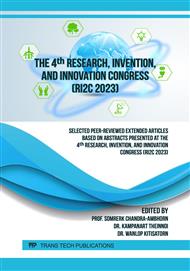[1]
M. Akay, D. Barkley, Fiber orientation and mechanical behavior in reinforced thermoplastic injection moldings, J. Mater. Sci., 26 (1991) 2731-2742.
DOI: 10.1007/bf02387744
Google Scholar
[2]
D. O'Regan, M. Akay, The distribution of fiber lengths in injection molded polyamide composite components, J. Mate. Proc. Tech., 56 (1996) 282-291.
Google Scholar
[3]
M. Gupta, K.K. Wang, Fiber orientation and mechanical properties of short-fiber-reinforced injection-molded composites: Simulated and experimental results, Polym. Compos., 14 (1993) 367-382.
DOI: 10.1002/pc.750140503
Google Scholar
[4]
S. Patcharaphun, G. Opaskornkul, Characterization of fiber length distribution in short and long-glass-fiber reinforced polypropylene during the injection molding process, Kasetsart J. (Nat. Sci.), 42 (2008) 392-397.
Google Scholar
[5]
I.S. Miles, S. Rostami, Multicomponent Polymer Systems, Polym. Sci. & Tech. Series, Longman Scientific & Technical, New York, 1992.
Google Scholar
[6]
C.P. Fung, J.R. Hwang, C.C. Hsu, The effect of injection molding process parameters on the tensile properties of short-glass-fiber reinforced PBT, Polym. Plast. Tech. & Eng., 41 (2003) 45-63.
DOI: 10.1081/ppt-120016335
Google Scholar
[7]
A. Vaxman, M. Narkis, A. Siegman, S. Kenig, Weldline characteristics in short fiber reinforced thermoplastics, Polym. Compos., 12 (1991) 161-168.
DOI: 10.1002/pc.750120305
Google Scholar
[8]
C. Eberhardt, A. Clarke, M. Vincent, T. Giroud, and S. Flouret, Fiber orientation measurements in short-glass-fiber composites: a quantitative error estimate of the 2D image analysis technique, Compos. Sci. & Tech. 61 (2001) 1961-1974.
DOI: 10.1016/s0266-3538(01)00106-3
Google Scholar
[9]
V.M. Nadkarni, S.R. Ayodhya, The influence of knit-lines on the tensile properties of fiber-glass reinforced thermoplastics, Polym. Eng. & Sci., 33 (1993) 358-367.
DOI: 10.1002/pen.760330609
Google Scholar
[10]
S.M. Lee, Handbook of Composite Reinforcements, VCH Publishers, New York, 1992.
Google Scholar
[11]
J. Denault, T. Vu-Khanh, B. Foster, Tensile properties of injection molded long fiber thermoplastic composites, Polym. Compos., 10 (1989) 313-321.
DOI: 10.1002/pc.750100507
Google Scholar
[12]
S.Y. Fu, B. Lauke, Effects of fiber length and fiber orientation distributions on the tensile strength of short fiber reinforced polymers, Compos. Sci. & Tech., 56 (1996) 1179-1190.
DOI: 10.1016/s0266-3538(96)00072-3
Google Scholar
[13]
A. Savadori, A. Pelliconi, D. Romanini, Weldline resistance in polypropylene composites, Plast. & Rub. Proc. & Appl., 3 (1983) 215-221.
Google Scholar
[14]
B. Fisa, M. Rahmani, Weldline strength in injection molded glass fiber-reinforced polypropylene, Polym. Eng. & Sci., 31 (1991) 1330-1336.
DOI: 10.1002/pen.760311807
Google Scholar
[15]
V.M. Nadkarni, S.R. Ayodhya, The influence of knit-lines on the tensile properties of fiber-glass reinforced thermoplastics, Polym. Eng. & Sci., 33 (1993) 358-367.
DOI: 10.1002/pen.760330609
Google Scholar
[16]
M. Akay and D. O'Regan, Generation of voids in fiber reinforced thermoplastic injection moldings, Plast. Rub. & Compos. Proc. & Appl., 24 (1995) 97-102.
Google Scholar



